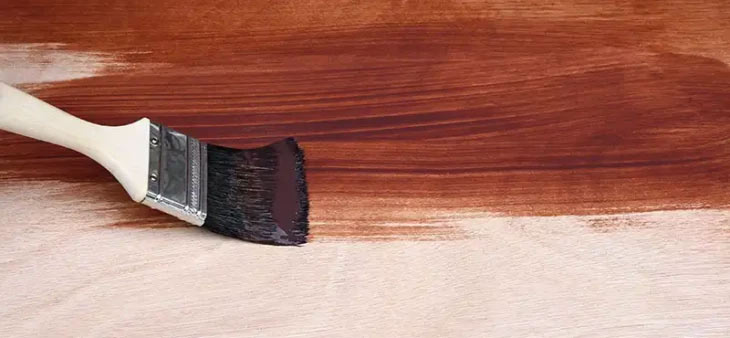Guide
How to Paint Garden/Outdoor Wooden Furniture
Revamping your outdoor space often calls for a fresh coat of paint on garden furniture. Whether it’s a sun-bleached bench or a rusted iron table, a touch of color can breathe new life into these pieces, turning them into the centerpiece of your backyard oasis.
Painting garden furniture not only enhances its aesthetic appeal but also increases its lifespan by offering added protection against the elements. However, it’s not just about slapping on any paint; choosing the right type and method ensures that the result is both beautiful and long-lasting.
In the journey of transforming your garden furniture, preparation is key. Every piece has its unique character, shaped by the weather and years of use. Recognizing this and approaching the task with a keen eye for detail will set the foundation for a successful makeover.
From selecting the perfect shade that complements your outdoor theme to understanding the intricacies of priming and finishing, every step is crucial. Let’s delve deeper into the world of painting garden furniture, ensuring that by the end, you’re equipped with all the knowledge you need to give your outdoor pieces a stunning makeover.
How To Paint Garden Furniture
Taking the time to paint wooden garden furniture can revitalize your outdoor space and provide a fresh look for those sunny days and cozy nights. The process is not as daunting as it might seem, but having the right materials and following the correct steps are essential. Here’s your guide to give that old garden furniture a brand-new shine.
What You’ll Need:
- Garden Furniture Paint: Ensure it’s suitable for either exterior wood or metal, depending on your furniture type.
- Paint Brush: A good quality one will provide a smoother finish.
- Waterproof Glue: To mend any small cracks or gaps.
- Chisel: Helpful for removing any old paint or rough patches.
- Abrasive Paper: This will help in sanding down rough surfaces for a smooth finish.
- Dusting Brush: Essential for clearing off any dust or debris before painting.
- Wood Filler: Useful for filling in any dents or holes.
- White Spirit: For cleaning purposes and preparing the surface.
- Exterior Primer: This will give your paint a good base to adhere to.
- Rag or Cloth: Useful for cleaning and wiping.
Picking The Right Garden Furniture Paint
The paint you choose can make or break the final look. While there are many paints available in the market, it’s essential to select one specifically designed for garden furniture. These are formulated to withstand the elements, ensuring longevity.
Recommended Garden Furniture Paints:
- Dulux Weathershield Exterior Gloss: A popular choice for wood and metal, known for its durability.
- Ronseal Garden Paint: Offers a wide range of colors and is suitable for a variety of surfaces.
- Cuprinol Garden Shades: It has a beautiful matte finish and provides long-lasting protection.
Preparing Your Area
Before you dive into painting, make sure you’ve set up a suitable workspace. This means choosing a well-ventilated area, covering the ground with newspapers or drop cloths, and keeping all your materials within arm’s reach.
Preparing The Woodwork
Start with a thorough inspection of your furniture. Remove any old, peeling paint using the chisel. Sand down any rough patches using the abrasive paper until the surface is smooth. If there are any cracks or gaps, fix them using waterproof glue and wood filler. Once done, use the dusting brush to clean off any debris.
Priming and Sanding
Apply a layer of exterior primer to your garden furniture. This not only helps the paint adhere better but also gives a smoother finish. Allow the primer to dry thoroughly, and then lightly sand the surface to ensure an even coat.
Garden Furniture Preparation
Before you paint, wipe down your furniture with a rag or cloth dipped in white spirit. This will remove any oils or residues, ensuring the paint sticks well.
Painting Wooden Garden Furniture

With everything prepped, it’s finally time to paint. Dip your brush in the paint and start with thin, even strokes. Ensure you cover every nook and cranny for a uniform look. Depending on the paint and the furniture’s original color, you might need a second coat. Allow the paint to dry thoroughly between coats.
The Benefits of Painting Garden Furniture:
Longevity and Durability
Garden furniture is continually exposed to sun, rain, and sometimes even snow. Over time, these elements can wreak havoc on the furniture’s surface, causing it to weaken. A fresh coat of paint acts as a protective barrier, shielding the furniture from these elements and ensuring it lasts longer.
Aesthetically Pleasing
Trends come and go. Maybe the green chairs that looked so chic a few years ago now seem outdated. Painting provides an opportunity to refresh the look, keeping your outdoor space in vogue.
Cost-Efficient Makeover
Instead of buying new furniture, painting the existing pieces can offer a fresh look at a fraction of the price. With just a few cans of paint, you can have what feels like brand-new furniture.
Steps to Ensure a Flawless Finish
Select the Right Day
Choose a day with mild temperatures and no forecast of rain. Extremely hot or cold temperatures can affect how the paint dries, so a moderate day is best.
Clean Thoroughly
Before you start, ensure your furniture is clean. Remove dirt, grime, and any old peeling paint. This will ensure a smooth finish and better paint adhesion.
Use Quality Brushes or Sprayers

The tools you use can greatly affect the outcome. Quality brushes ensure even strokes, while sprayers are excellent for larger pieces.
Choosing the Right Color
Consider Your Outdoor Theme
Is your garden modern or rustic? The style can guide your color choice. For example, a rustic garden might benefit from earthy tones, while a modern garden might look great with bolder colors.
Test First
Before committing to a color, do a patch test. Paint a small section and see how it looks in different lights throughout the day.
Consider the Surroundings
Think about the flowers and plants in your garden. Choose colors that either complement or provide a pleasing contrast.
Maintenance: Keeping the Shine Alive
Regular Cleaning
Wipe down your painted furniture regularly to prevent the buildup of dirt and grime, which can wear down the paint over time.
Touch-Ups
Even with the best precautions, there might be occasional chips or scratches. Have some paint on hand for quick touch-ups when needed.
Store or Cover During Harsh Weather
If possible, store your furniture indoors during extreme weather conditions or consider using protective covers.
Understanding Different Types of Paints
Water-Based vs. Oil-Based
- Water-Based Paints: Quick-drying, less odorous, and usually easier to clean up. They’re also generally more environmentally friendly.
- Oil-Based Paints: Take longer to dry but often provide a smoother and more durable finish. They’re especially useful for areas that receive a lot of wear.
Matt, Gloss, or Satin?
Choosing the right finish can impact the look and feel of your furniture:
- Matt Finish: Provides a non-reflective finish, great for hiding minor imperfections.
- Gloss Finish: Offers a high shine, making colors pop. However, it can highlight imperfections.
- Satin Finish: A middle ground between matt and gloss, giving a soft sheen without being overly shiny.
Safety Precautions During Painting
Ventilation
Always paint in a well-ventilated area. This not only helps the paint dry faster but also ensures you’re not inhaling any harmful fumes.
Protective Gear
Wear gloves, especially when dealing with oil-based paints, and consider a mask if you’re sensitive to fumes. Safety glasses can also be helpful to prevent any accidental splatters.
Safe Storage
Store leftover paints in a cool, dry place out of reach from children and pets. Make sure the lids are tightly sealed.
Adding Personal Touches
Stenciling and Patterns
Give your painting outdoor furniture wood a unique touch with stencils or hand-painted patterns. From florals to geometric designs, the possibilities are endless.
Mix and Match

Who says all your garden furniture has to be the same color? Create a vibrant and lively space by mixing and matching different shades.
Accessorize
Once your furniture is painted, consider adding new cushions, throws, or decorative items to complement the new look.
FAQs
1. What Kind of Paint Do you Use on Garden Furniture?
You should use paints specifically formulated for outdoor use, such as exterior wood or metal paints. These ensure durability and resistance to weather conditions.
2. What Do You Paint Outdoor Furniture With?
For outdoor furniture, utilize high-quality brushes or sprayers along with exterior-grade paints designed for the specific material (wood, metal) of the furniture.
3. Do I Need to Prime Garden Furniture Before Painting?
Yes, priming garden furniture provides a smooth base, ensures better paint adhesion, and enhances the paint’s durability and finish.
4. What Kind of Paint Do You Use on Outdoor Wood Furniture?
For outdoor wood furniture, use paints labeled as “exterior wood paint” which offer protection against UV rays, moisture, and varying temperatures.
5. Is It Better to Spray or Paint Garden Furniture?
Both methods have their merits. Spraying is faster and provides an even coat, especially for intricate designs, while brushing offers more control and can be better for detailed work.
